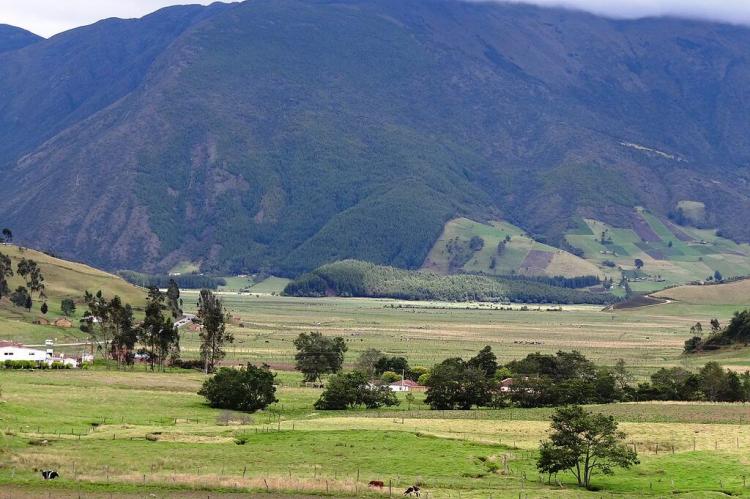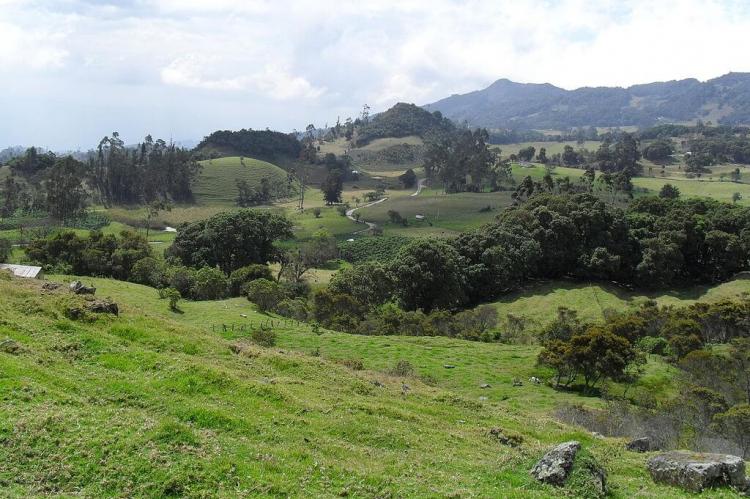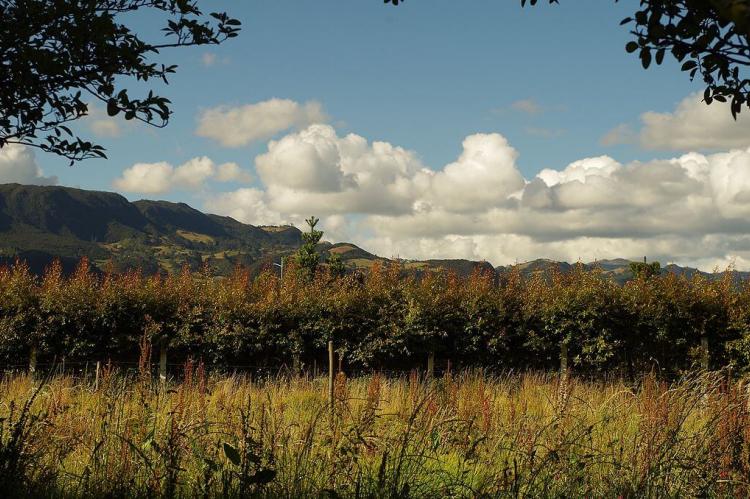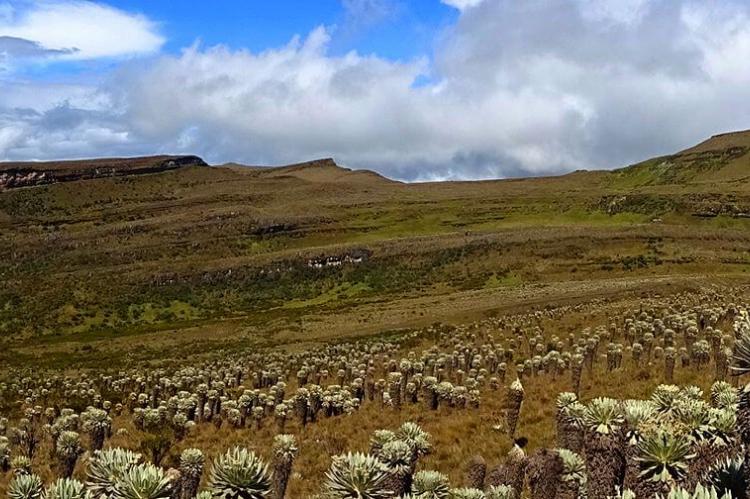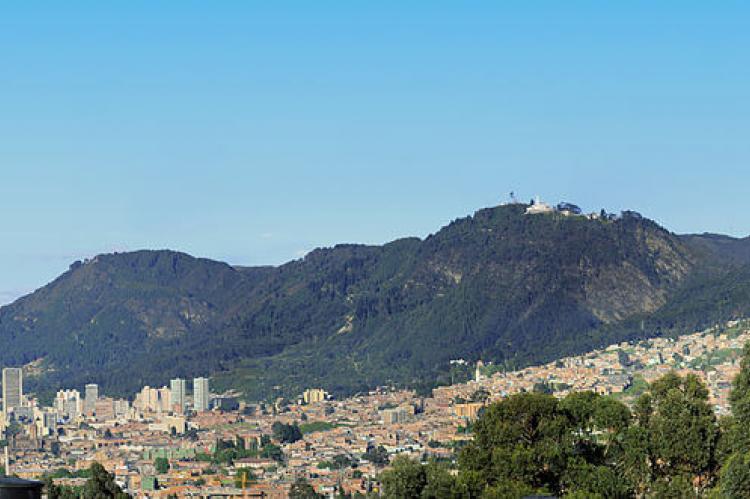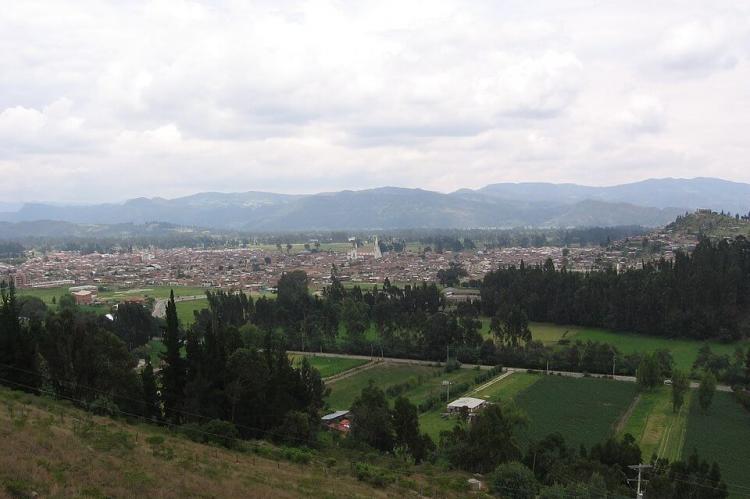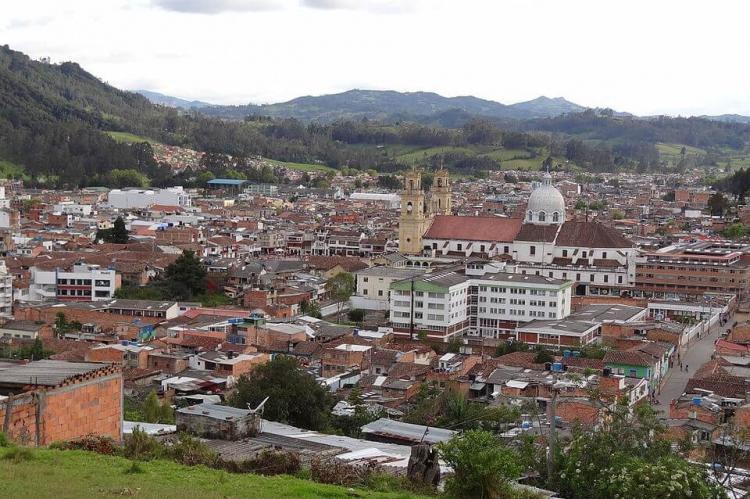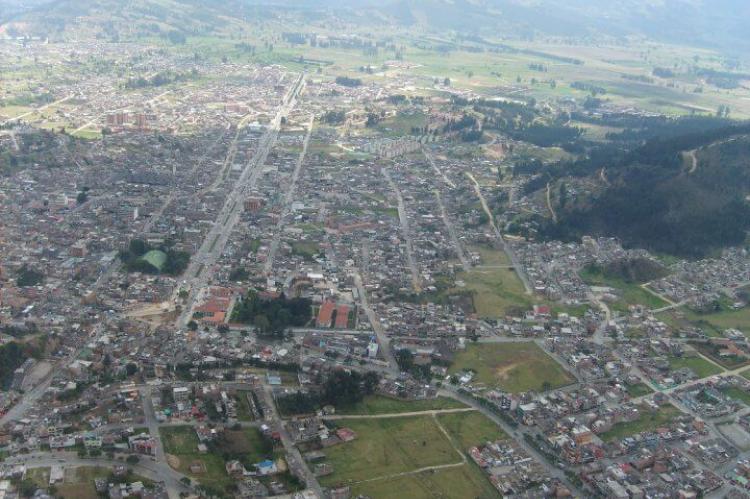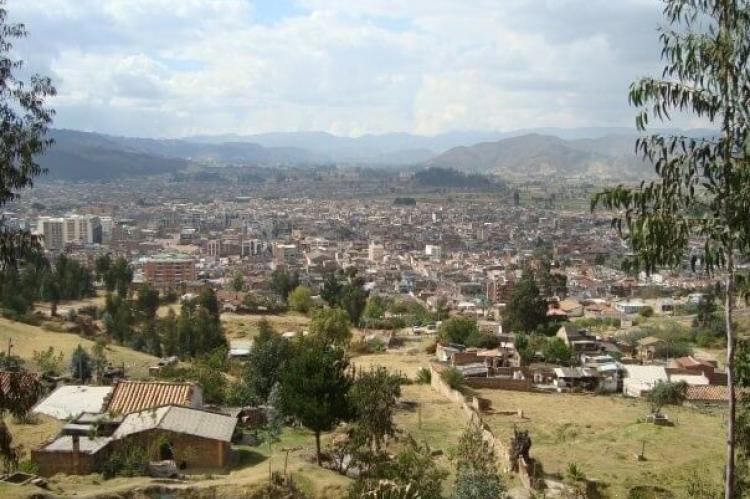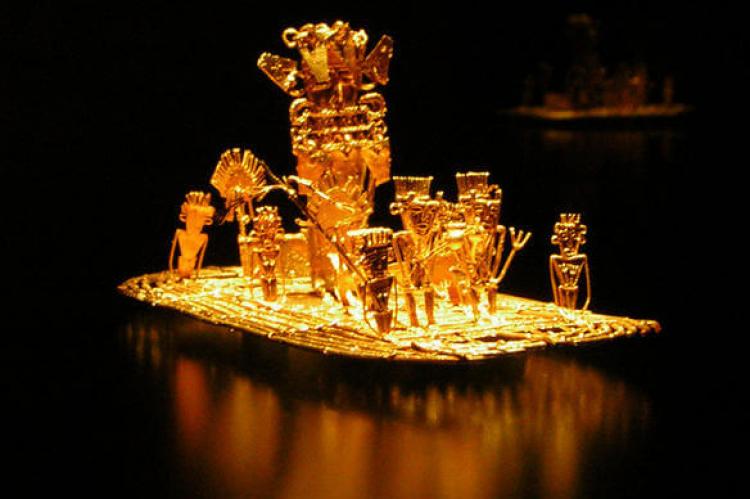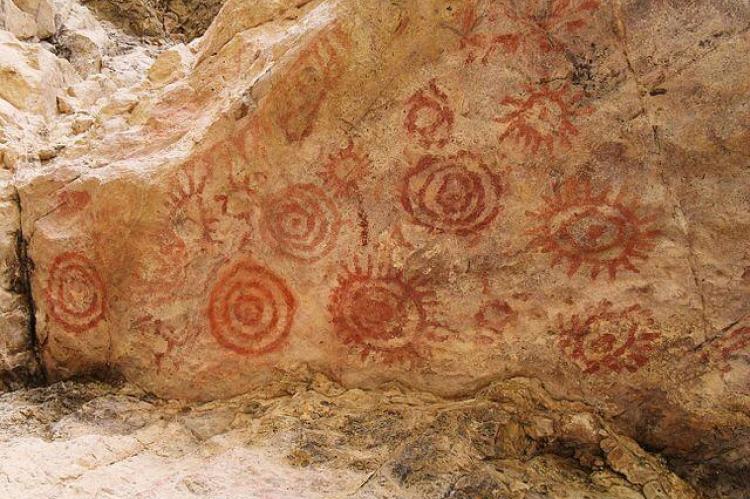The Altiplano Cundiboyacense: Ancient Territory of the Muisca Civilization
The Altiplano Cundiboyacense is a high plateau in the Colombian Andes, spanning the departments of Cundinamarca and Boyacá and renowned for its natural beauty and rich history. It is the birthplace of the Muisca civilization, whose influence on Colombian culture and the environment is still felt today.
The Altiplano Cundiboyacense
Ancient Territory of the Muisca Civilization
Nestled amidst the majestic expanse of the Colombian Andes, where rugged peaks reach towards the heavens and lush valleys sprawl endlessly, exists a landscape of unparalleled allure and profound historical importance – the Altiplano Cundiboyacense. This vast high plateau, extending across the departments of Cundinamarca and Boyacá, emerges as a crucible of ancient civilization and natural splendor. The birthplace of the illustrious Muisca civilization lies amidst the whispering winds and towering mountains, a society whose imprint on Colombia's cultural and environmental tapestry endures to this day and reverberates far beyond its borders.
The Altiplano Cundiboyacense is more than just a geographical expanse; it is a canvas upon which the rich tapestry of Colombian history and heritage is painted. Stretching across the undulating terrain of Cundinamarca and Boyacá, this high plateau holds a wealth of natural wonders and cultural treasures within its embrace. As the cradle of the ancient Muisca civilization, the Altiplano bears witness to centuries of human endeavor, innovation, and resilience. From its vibrant settlements' bustling markets to its pristine landscapes' tranquil serenity, every inch of this expansive plateau tells a story of endurance, adaptation, and transformation.
Geographical and Environmental Features
The Altiplano Cundiboyacense boasts diverse geographical and environmental features that make it a region of exceptional importance and intrigue. Spanning across the departments of Cundinamarca and Boyacá, this high plateau is a mosaic of contrasting landscapes and ecosystems, each contributing to its unique character and ecological significance.
At the heart of the Altiplano Cundiboyacense lie three distinctive regions, each with its distinct topography and ecological diversity.
-
The Bogotá savanna, with its expansive flat terrain and lush vegetation, serves as the bustling urban center of the region, juxtaposing modernity with natural splendor.
-
The Ubaté and Chiquinquirá valleys, characterized by rolling hills and fertile farmlands, offer a glimpse into the area's agricultural heritage, where traditional farming practices coexist with contemporary agrarian methods.
-
The Duitama and Sogamoso valleys, nestled amidst towering peaks and pristine rivers, provide a haven for wildlife and nature enthusiasts, showcasing the untamed beauty of the Colombian Andes.
Spanning altitudes ranging from roughly 2,500 to 4,000 meters (8,200 to 13,100 feet) above sea level, the Altiplano Cundiboyacense is a land of extremes, where towering mountains meet sprawling plains and verdant valleys. Despite its high elevation, the region has abundant water sources, including rivers, lakes, and wetlands, which sustain a rich diversity of flora and fauna. From the crystal-clear waters of Lake Guatavita to the meandering rivers that crisscross the landscape, water is the lifeblood of the Altiplano, shaping its ecosystems and sustaining its inhabitants.
Bounded by the higher mountains of the Eastern Ranges, various Andean ecosystems surround the Altiplano Cundiboyacense, each contributing to its ecological richness and biodiversity. To the south, the towering peaks of the Sumapaz and Chingaza mountains form a natural boundary, their páramo vegetation serving as a vital habitat for unique plant and animal species found nowhere else on Earth. Despite its harsh environmental conditions, with temperatures fluctuating between 0 to 24°C (32 to 75 °F) and frequent hailstorms, the Altiplano Cundiboyacense teems with life, showcasing the resilience of its flora and fauna in the face of adversity.
Cultural Heritage of the Muisca Civilization
The cultural heritage of the Muisca civilization stands as a testament to the ingenuity, resilience, and sophistication of indigenous peoples inhabiting the Altiplano Cundiboyacense. At the heart of this high plateau lies the ancient territory of the Muisca, a civilization that flourished between 600 and 1600 CE, leaving an indelible mark on Colombian history and culture.
Encompassing the central Andean highlands, including what is now Bogotá and its surrounding areas, the Muisca inhabited a landscape of stunning natural beauty and abundant resources. Renowned for their advanced societal structures and intricate social organization, the Muisca formed the Muisca Confederation, a loose alliance of different regional rulers and chiefdoms. This confederation served as a testament to their ability to foster cooperation and unity among diverse ethnic groups, creating a cohesive society that thrived amidst the rugged terrain of the Andes.
Central to Muisca society was their language, Muysccubun, a member of the Chibchan language family. It served as a unifying force among different communities and facilitated communication and trade across vast distances. Despite lacking the grand stone architecture of civilizations like the Maya, Aztecs, and Incas, the Muisca crafted a distinctive architectural style characterized by relatively small settlements consisting of circular houses made of wood and clay. These settlements, organized around central market squares with the chief's house at the center, served as hubs of economic, social, and cultural activity, showcasing the vibrancy and dynamism of Muisca society.
Economically, the Muisca were highly skilled in various trades and industries, relying on agriculture, salt mining, trade, metalworking, and manufacturing to sustain their society. Their agricultural practices, including terracing and irrigation, allowed them to cultivate crops such as maize, potatoes, and beans in the challenging Andean environment. Additionally, salt mining played a crucial role in the Muisca economy, with the region's abundant salt deposits providing a valuable commodity for trade and exchange with neighboring societies.
The Muisca's expertise in metalworking and manufacturing is evidenced by the intricate goldwork and ceramics unearthed at archaeological sites throughout the Altiplano Cundiboyacense. These artifacts, ranging from intricately crafted gold ornaments to finely glazed pottery, highlight the artistic and technical prowess of the Muisca artisans, who transformed raw materials into objects of beauty and utility.
Legacy and Descendants
Following the Spanish conquest in 1537, the once-flourishing Muisca civilization experienced a decline marked by disrupting traditional social structures, cultural practices, and economic systems. The arrival of Spanish colonizers brought about profound changes to the region, including forced labor, religious conversion, and the spread of disease, which decimated the indigenous population and irrevocably altered the fabric of Muisca society. Despite these challenges, however, the legacy of the Muisca continues to endure, woven into the fabric of Colombian culture and identity.
In the wake of the Spanish conquest, many Muisca communities were displaced or assimilated into colonial society, their ancestral lands confiscated and their cultural traditions suppressed. Despite the adversity they faced, however, Muisca descendants persevered, holding fast to their cultural heritage and preserving their traditions through generations of hardship and struggle. Today, descendants of the Muisca can be found throughout Colombia, their presence a testament to the resilience and resilience of indigenous peoples in the face of colonization and cultural assimilation.
Despite a drastic decrease in population over the centuries, Muisca descendants continue to honor and celebrate their cultural heritage, ensuring that the legacy of their ancestors remains alive in the modern world. Through efforts to reclaim and revitalize traditional practices, language, and customs, Muisca communities reclaim their place in Colombian society and assert their identity as proud descendants of the ancient Muisca civilization. From cultural festivals and ceremonies to educational initiatives and community outreach programs, Muisca descendants actively preserve and promote their cultural heritage, ensuring that future generations inherit a legacy of resilience, pride, and cultural continuity.
The Ministry of Interior Affairs census 2005 counted over 14,000 Muisca descendants in Colombia, a testament to indigenous culture's enduring presence and influence in Colombian society. Recently, there has been a growing recognition of the importance of indigenous rights and cultural heritage, with initiatives to promote greater inclusion, representation, and empowerment for Muisca communities. Through collaborative partnerships with government agencies, non-profit organizations, and academic institutions, Muisca descendants are working to safeguard their cultural heritage, protect their ancestral lands, and preserve their traditional way of life for generations.
Conclusion
In conclusion, the Altiplano Cundiboyacense stands as a testament to the enduring power of nature and the rich tapestry of life that thrives within its borders. From its towering peaks to its fertile valleys, this high plateau is a land of boundless beauty and untamed wilderness, beckoning adventurers and explorers to uncover its secrets and marvel at its wonders. As stewards of this precious ecosystem, we are responsible for preserving and protecting the Altiplano Cundiboyacense for future generations, ensuring that its natural heritage remains intact for years to come.
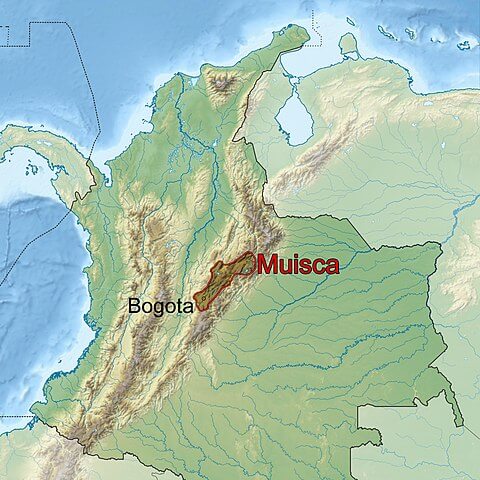
Map depicting the Altiplano Cundiboyacense's location and the Muisca culture's territory.
